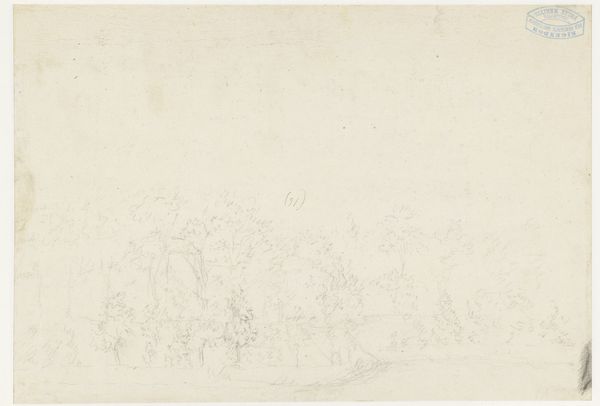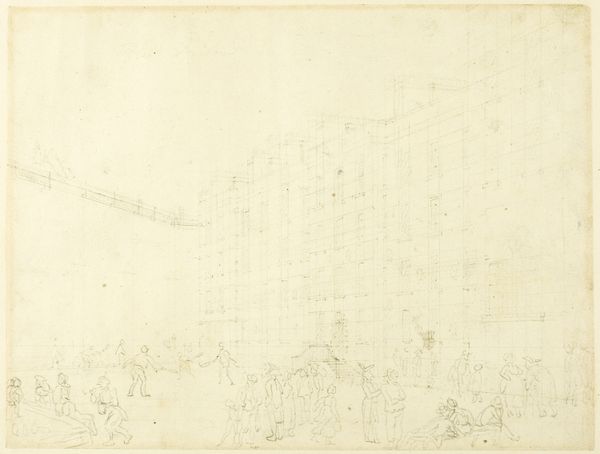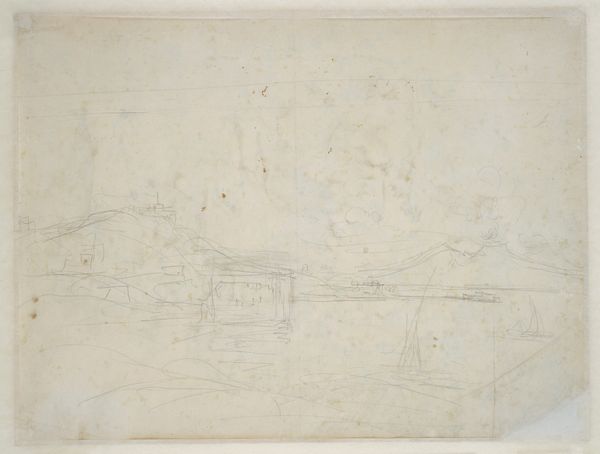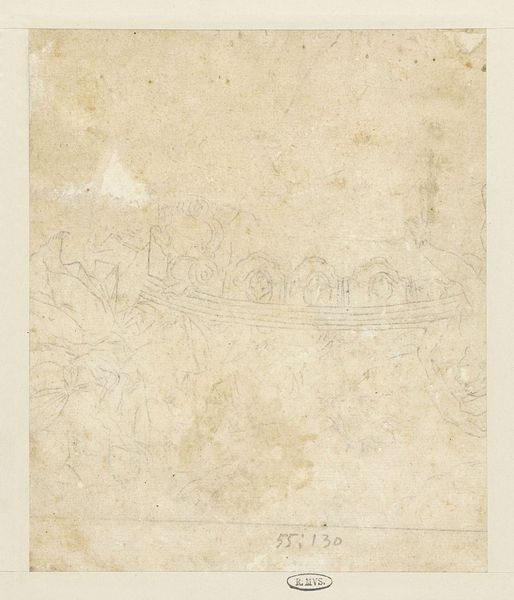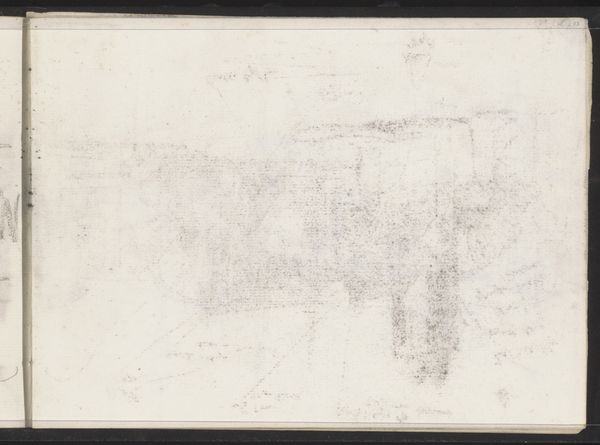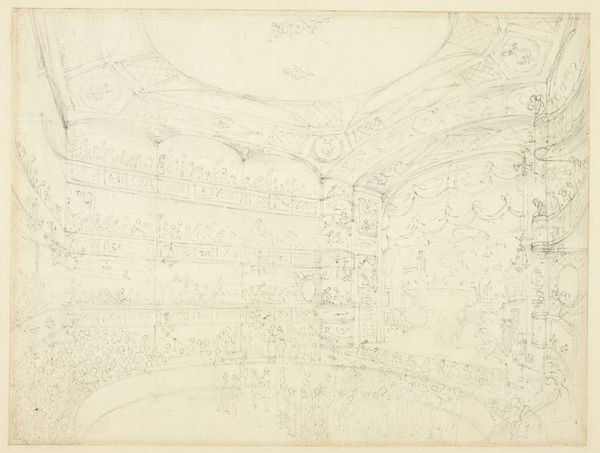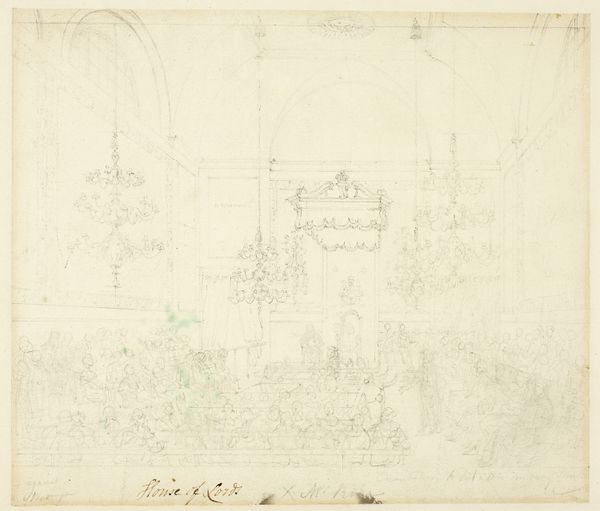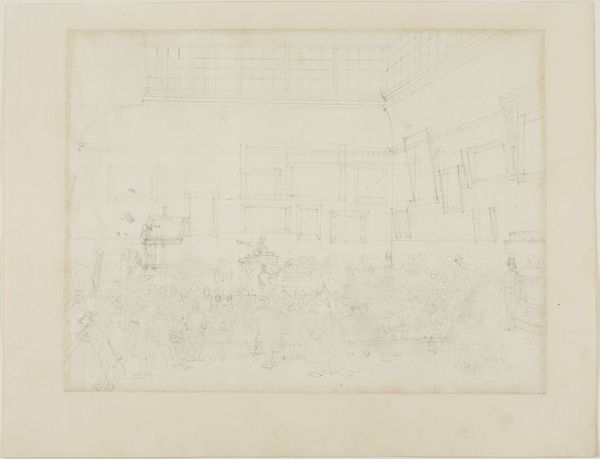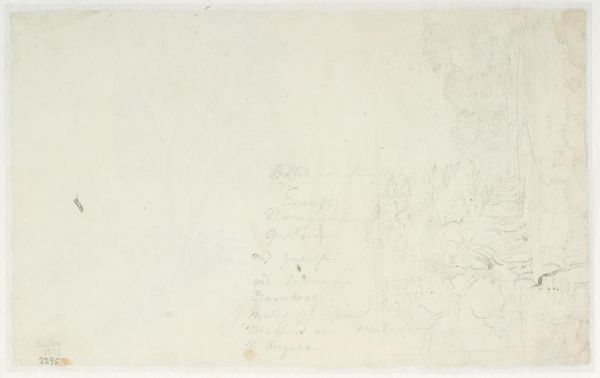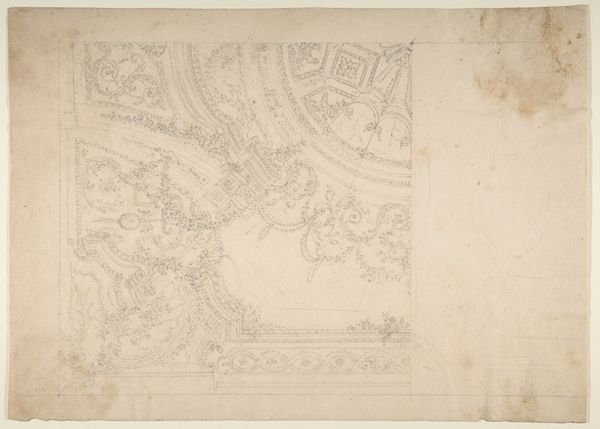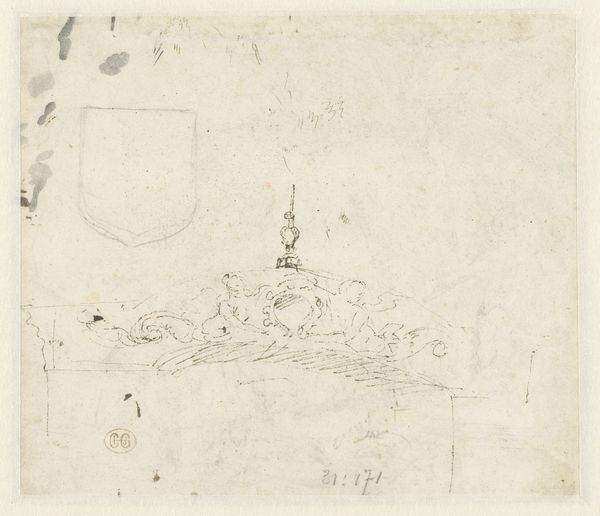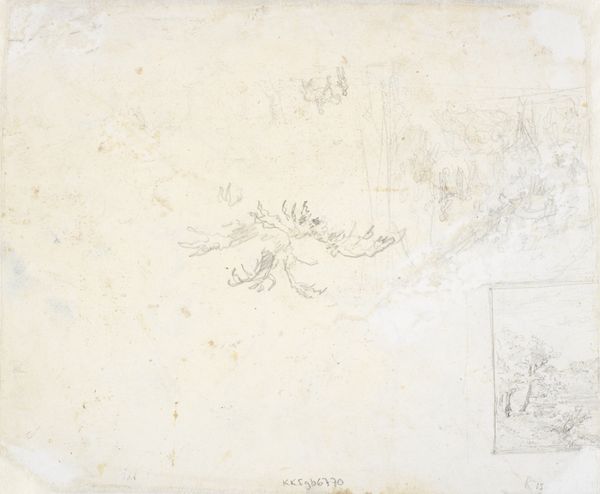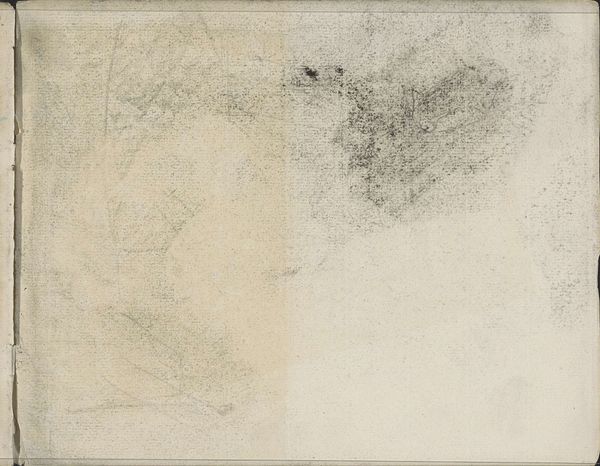
Study for House of Commons, from Microcosm of London c. 1808
0:00
0:00
drawing, print, paper, pencil, graphite
#
drawing
#
neoclacissism
# print
#
paper
#
pencil
#
line
#
graphite
#
cityscape
#
watercolor
Dimensions: 212 × 251 mm
Copyright: Public Domain
Editor: Here we have Augustus Charles Pugin's "Study for House of Commons, from Microcosm of London," circa 1808, rendered in graphite, pencil, and print on paper. It’s fascinating how he captures the energy of the space despite the delicacy of the medium. What jumps out to you? Curator: Well, immediately, I’m drawn to consider the “House of Commons” not just as a physical location but as a symbolic representation of power, particularly in early 19th century London. Think about who would have access to depictions like this and how they might have used or understood it. Who held political power and whose voices were actually represented in such a space, depicted or not? Editor: That makes me wonder about the purpose of this study. Was it intended to democratize the image of Parliament, or did it reinforce existing power structures? Curator: That’s exactly the question. The Microcosm of London aimed to document London life. But whose life was truly represented, and for what audience? Consider also the style—neoclassicism—a style itself tied to notions of order, reason, and often used by those in power to present themselves favorably. The drawing is a means of visualizing, and therefore validating, the political theater occurring inside. How does this perspective influence how you see it? Editor: It makes me think more critically about the intended audience and the artist's role in shaping perceptions of power. It’s not just a drawing of a room; it’s a statement about who gets to be seen and heard. Curator: Precisely. And art often serves that function, doesn't it? Reflecting, reinforcing, and sometimes challenging the established order. Next time you see an artwork portraying power, ask yourself: who is truly in the picture, and who is left out? Editor: Absolutely! That is very helpful way to understand artwork. Thanks for this!
Comments
No comments
Be the first to comment and join the conversation on the ultimate creative platform.
